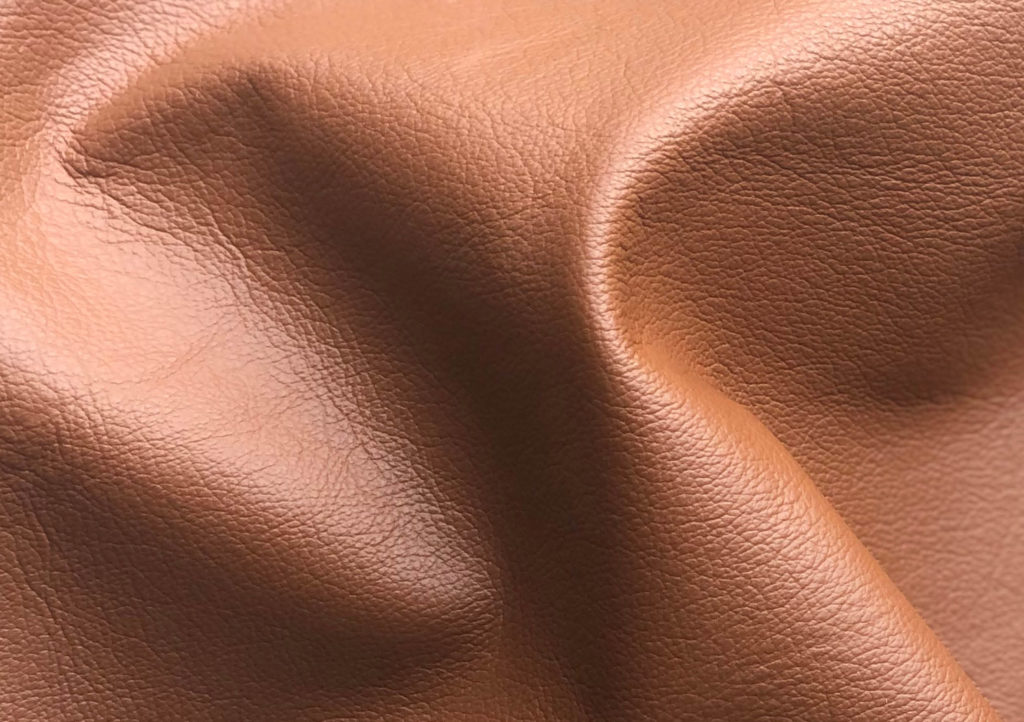
Leather care
Quality leather provides a look and feel to furniture that has no equal. Leather is a fully natural product, and no two leather hides are exactly alike. Natural leather is a noble and resistant material, which becomes more valuable over time. Its transpiration properties make it warm in the winter and cool in the summer, and its flexibility allows it to mold perfectly to the body’s shape.
Characteristics such as scratches, healed sores, wrinkles, insect bites, breaks, veining, and variations in grain and color are natural features of hides that give them their value and character.
We try to position the most visuals irregularities on the back or on the outside of the furniture. Each hide is therefore individually cut and sewn together on your furniture, and our craftsmen are applying decades of knowledge to provide you with fine leather furniture perfectly suited for use in your home.
Natural Variation in Texture
Premium leather hides used for upholstering furniture will exhibit non-uniform surface qualities, depending on the area of the hide from which they were cut. Pigment-dyed, buffed and embossed leather will obscure some of these natural texture characteristics. Variations in texture are not flaws and will not affect the leather’s durability.
Common surface variations include scratches, wrinkles and healed sores.
- Scratches from branches or stretch marks are smooth to the touch but may accept dye with slight variation to the surrounding area.
- Wrinkles vary from hide to hide. Appears particular in the neck area. These natural folds highlight unique grain patterns.
- Healed Sores, barbed-wire sores and abrasions create organic surface texture and one-of-a-kind authentic leather characteristics. These marks do not affect the durability of the hide.
- Veins, insect bites and uneven surfaces. Leather is a natural product, and the skin of an animal is affected by the climatic conditions under whit it lives.
Natural Variation in Shades
Premium aniline and semi aniline dyed leather may further display subtle variations of color across the surface of the hide. When the hide is cut and sewn together on your furniture, care is taken to attempt to match adjacent pieces, but subtle color differences may occur. These are not sign of poor quality; in fact, they highlight the unique and natural quality of the best upholstery leather.
Care advice to protect your leather furniture
Be careful not to place your furniture near a radiator or other heat source. We recommend at least two feet (60 cm) of space between your furniture and heat sources to prevent excessive drying.
Natural leather will fade if placed in sunlight. To prevent fading avoid placing your furniture in direct sunlight by staying away from windows, doors and skylights.
Your new leather furniture will stay nicer if it is extra protected against staining caused by dirt, oil, water and alcohol. For the best result please apply a leather protection cream before use.
For minor or slight scratches on the surface, use a soft cloth or clean finger to gently buff the scratch. If needed moisturize lightly with distilled water to work scratches out. Remember that leather is a natural product and requires some care to maintain its natural splendor.
Cleaning advice
- Dust and wipe the surface of your leather furniture regularly, by using a soft damp cloth with the addition of some Leather Cleaner if needed.
- Remove stain, drinks, oil, fats and cosmetics as quickly as possible.
- Vacuuming with a soft front brush in crevices or bottoms are further recommended to keep your furniture clean.
- To keep your furniture looking good we recommend you to use a Leather Care product to proper clean and protection your leather furniture 2-4 times a year. Pay particular attention to the seats, arms and head rests, where you experience the greatest amount of body contact.
- Never use any harsh chemicals on your leather. Always keep materials such as bleach, paint, nail polish and remover away from your leather.
Stain removal
For minor spills or soiled furniture, wipe of any excess liquid immediately with a clean absorbent cloth or sponge.
If necessary, gently wipe the area with a soft cloth (preferable white), moistened with clean, lukewarm water and allow the area to dry natural. If water is used, clean the entire area where the spot occurred. Do not use soap or soak the stain heavily with water as this might cause more damage than the stain itself!
For butter, oil, or grease wipe off excess quickly with a clean dry cloth, then leave it alone as the spot should dissipate into the leather after a period of time. Do not rub! Do not use saddle soap, cleaning solvents, furniture polish, oils, varnish, abrasive cleaners, detergent soaps or ammonia water.
After the furniture has been cleaned and have dried naturally, we recommend you apply leather protection cream.
If the stain persists, it is recommended that the leather be cleaned by a professional leather care specialist to avoid any potential damage to the leather.
Always try the cleaning method in a hidden area first. Cleaning products containing solvent, or abrasives should never be used. Use of fat-soluble detergents should also be avoided as these products can dry out the leather.
Rules of Caution
- Arm and neck rests are particularly exposed to body oils and perspiration. This can lead to dark stains and collection of salt that will damage the leather. Chemicals from hair products, cosmetics and hand creams etc. can also result in similar damage. More frequent cleaning of these areas might be required.
- Jeans, particularly when new, can cause discoloring. Pets should not be allowed to sit on leather furniture as they too can cause damage to the leather.
- Particular care should be taken if you are taking certain medications (including, but not limited to; chemotherapy, blood pressure and heart medications). Some properties of these medications can be transferred through perspiration onto the surface of the furniture and cause stains or other damage. If you use these kinds of medications, we recommend that you increase the frequency of cleaning and protecting your leather furniture. Pay particular attention to arms and head rests, and those areas that experience the greatest body contact.
We recommend you to regularly and preferable every 3-6 months clean your leather with a Leather Cleaner followed by a Leather Protection Cream.

